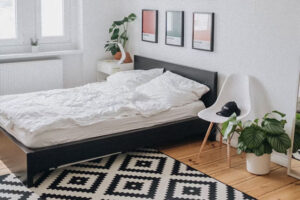Best Hotel Photography Angles: From Eye-Level to Wide-Angle
Michael • May 17, 2023 • 9 min read
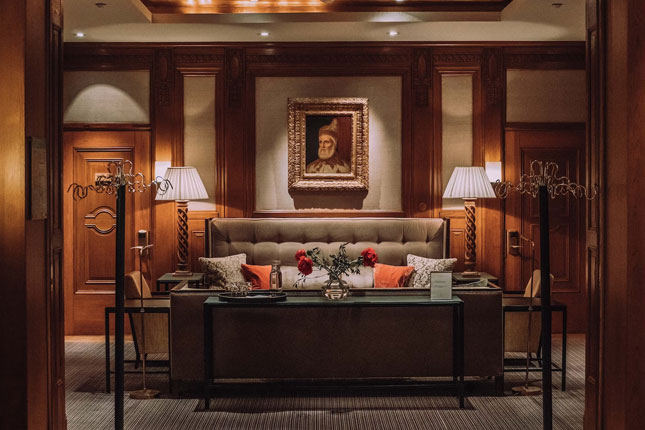
Photography, as they say, is the art of painting with light. It’s an elegant dance of shadows and highlights, a silent storyteller, and in the realm of hospitality, it’s the magnetic allure that draws guests into the warm embrace of a hotel.
Yet, much like a well-choreographed ballet, this dance of allure is not merely a matter of point-and-shoot. It requires a deft hand, a keen eye, and an intimate understanding of angles.
So, fellow shutterbugs, buckle up as we embark on this captivating odyssey through the lens, exploring the enigmatic world of hotel photography angles.
Content
1. The Basics of Hotel Photography
In the journey of mastering hotel photography angles, we first need to establish our base camp – the basics. Uncover your tripod, dust off your lenses, and let’s step into the world of hotel photography.
A. Essential Equipment for Hotel Photography
Would you embark on a grand maritime expedition without a ship? Of course not! Similarly, navigating the waters of hotel photography requires you to be armed with the right gear.
- Camera: Whether you’re a Nikon loyalist or a Canon enthusiast, the choice of a camera boils down to your comfort and familiarity. However, always ensure that your device allows for high-resolution imagery.
- Lenses: Ah, the eyes of your camera! A wide-angle lens (14-24mm) can capture expansive interiors, while a tilt-shift lens can manage perspective distortion like a dream.
- Tripod: If your camera is the ship, consider the tripod your anchor. It offers stability, enables long exposure shots, and yes, helps you experiment with those delectable angles.
- Lighting Equipment: Natural light is your best friend, but for those cloud-ridden days or dimly lit interiors, artificial lighting equipment steps in to save the day.
B. Understanding Light and Composition
A hotel is not merely a structure of bricks and mortar, but a symphony of elements singing in harmony. The play of light and composition is the maestro conducting this symphony.
Lighting can transform a mundane shot into a captivating visual narrative. The soft morning light can paint a picture of tranquility, while the golden evening glow can imbue a sense of warmth.
Composition, on the other hand, is the art of arranging these elements in harmony. It’s about striking a balance between negative and positive space, about leading the viewer’s eye through the image. Remember, every element in your frame is a note in your symphony. Make it count.
C. The Importance of Staging in Hotel Photography
If composition is the symphony, staging is the choir that adds depth to the performance. The right staging can infuse life into a space, making it inviting and engaging.
The idea is to create a scene that tells a story – a plush armchair by the fireplace, a neatly laid out breakfast tray on the bed, a book casually left open on the coffee table. These elements not only add visual interest but also hint at the experiences awaiting the guests.
However, the trick lies in subtlety. Overstage, and you risk transforming the space into a theatrical set; under-stage, and the room might come across as impersonal. The key is to find that sweet spot that says, “Welcome, make yourself at home.”
If you’re interested in diving deeper into preparation, our guide Hotel Photoshoot Preparation provides a wealth of information and insights.
Having grasped these fundamentals, we’re now ready to delve into the heart of our odyssey – the enigmatic world of hotel photography angles. Buckle up, fellow explorers! The real adventure begins now!
2. The Importance of Angles in Hotel Photography
Now that we have our sturdy ship and a reliable map in hand, it’s time to set sail into the heart of our odyssey – the mysterious realm of angles. You might wonder, why such fuss about angles? Aren’t they just, well, angles? Ah, dear reader, prepare to be amazed!
A. Influence of Angles on Viewer Perception
In photography, angles are the silent puppeteers, masterfully pulling the strings of viewer perception. The same room, viewed from different angles, can evoke starkly contrasting reactions.
Think of an eye-level shot. It puts the viewer right in the scene, making them feel as if they could walk straight into the frame. A high-angle shot, on the other hand, gives a sense of overview, an impression of the layout, and the interplay of elements within the space.
A clever photographer manipulates angles like a maestro, directing the viewer’s gaze, influencing their perception, and ultimately shaping their experience. Now, isn’t that simply fascinating?
B. How Angles Can Enhance or Diminish Details
Angles are the magnifying glass of photography. They can bring minute details into sharp focus or, conversely, blur them into oblivion. A lower angle could highlight the intricate patterns of a rug, while a higher angle could showcase the grandeur of a sweeping staircase or a majestic chandelier.
Yet, with great power comes great responsibility. Used carelessly, angles could distort proportions or highlight unflattering details. So, wield your ‘angle-power’ wisely, dear photographer!
C. Using Angles to Tell a Story or Convey a Mood
Now, here comes the real magic of angles! With a dash of creativity and a pinch of intuition, angles can be your storytelling tool, your paintbrush to color the mood of an image.
A low-angle shot could lend an air of majesty to a grand lobby, while a close-up could convey the intimate charm of a cozy reading nook. Angles, dear reader, are the language your camera speaks. Learn it well, and your images will sing stories that words often fail to express.
So, has the world of angles piqued your curiosity yet? Hold on tight, for we’re about to dive deeper into this enigmatic realm. Next stop – a detailed tour of different hotel photography angles and their unique magic!
3. Different Hotel Photography Angles and When to Use Them
Congratulations, brave explorer! You’ve made it to the heart of our odyssey – the realm of angles. So, grab your camera, hoist your tripod, and let’s uncover the secrets of hotel photography angles, one shot at a time.
- Eye-level Shots
The eye-level shot is the comfort food of photography – familiar, relatable, and oh-so-inviting. It’s as if you’re standing right there in the room, taking it all in. Use eye-level shots to give viewers a realistic view of the space, making them feel as if they’re part of the scene. It’s like saying, “Come on in, the water’s lovely!” - High-angle Shots
High-angle shots are the aerial view of your hotel photography toolkit. They offer a bird’s-eye view of the space, showcasing the layout and the interplay of elements. Planning to highlight the spaciousness of a suite or the grandeur of a lobby? Let high-angle shots do the trick! - Low-angle Shots
Ah, the drama of low-angle shots! They’re your ticket to a world of majesty and grandeur. A low-angle shot can turn an ordinary reception desk into a monumental piece of architecture, a humble chandelier into a celestial spectacle. Use them to highlight vertical elements or to infuse a sense of awe into your images. - Wide-angle Shots
Wide-angle shots are the panoramic vistas of hotel photography. They embrace the expanse of a space, capturing it in all its glory. Use wide-angle shots to showcase large spaces or to give a comprehensive view of rooms. However, tread carefully, dear explorer! Overuse of wide-angle shots can lead to distortion, turning your grand tour into a fun-house mirror experience. - Close-up Shots
Finally, we arrive at close-up shots – the whispers amidst the loud conversations. They’re your tool for highlighting the intricate details – the texture of a throw pillow, the elegance of a table lamp, the morning sunlight dancing on a coffee cup. Use close-up shots to tell intimate stories, to draw the viewer’s attention to the small yet significant elements.
♦ So, there you have it – a tour of the intriguing world of hotel photography angles. But remember, the real magic lies not merely in knowing these angles, but in using them creatively, in weaving them into your unique narrative.
And on that note, let’s gear up for our next adventure – real-life examples of these angles at play. Onward, fellow explorers!
4. Case Study Examples of Effective Hotel Photography Angles
Welcome to our very own gallery of hotel photography angles! Get ready to be inspired as we dive into real-life case studies showcasing the power and impact of different angles. Let’s explore the world of angles through captivating visuals and intriguing stories.
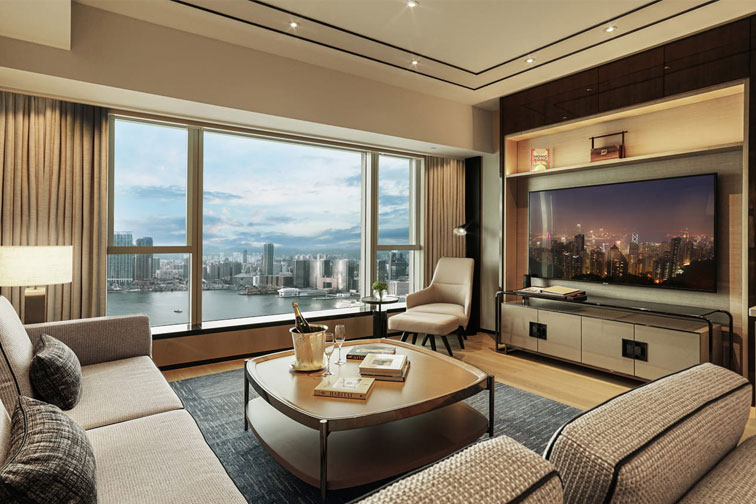
A. Eye-level Shot Case Study: The Cozy Retreat
Imagine stepping into a luxurious hotel room that feels like a warm embrace. The eye-level shot captures the essence of comfort and invites you to unwind. In this case study, we encounter a beautifully designed bedroom with plush pillows, soft lighting, and a window overlooking a serene garden.
The eye-level shot places us right in the room, as if we’re about to sink into the cozy bed ourselves. It creates a personal connection and evokes a sense of tranquility, making us long to experience this serene retreat firsthand. Example: Four Seasons Hotel Hong-Kong
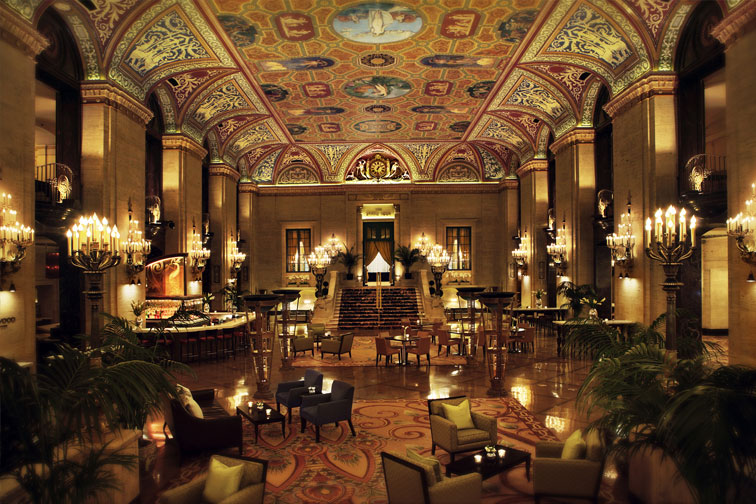
B. High-angle Shot Case Study: The Grand Lobby
In this case study, we venture into the heart of a hotel’s grand lobby. The high-angle shot takes us on a soaring journey, revealing the vastness and opulence of the space. As we gaze down from above, we witness the intricate details of the lobby’s design, the symphony of colors and textures, and the vibrant energy of guests bustling about.
The high-angle shot emphasizes the grandeur, providing a comprehensive view of the lobby’s layout and leaving us in awe of its magnificence.

C. Low-angle Shot Case Study: The Architectural Marvel
Prepare to be captivated by this case study featuring a low-angle shot of a hotel’s architectural marvel. As we tilt our gaze upward, we witness the symphony of soaring columns, exquisite arches, and intricate details.
The low-angle shot infuses a sense of grandiosity and highlights the architectural mastery of the building. We can almost feel the weight of history and marvel at the craftsmanship that went into creating this remarkable structure. Example: The Mist Hot Spring Hotel, Henan
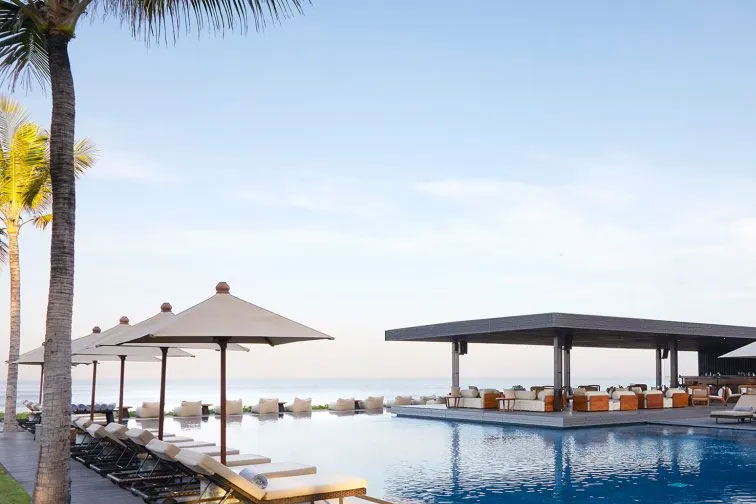
D. Wide-angle Shot Case Study: The Panoramic Escape
Let’s embark on a visual journey through this wide-angle shot case study. Picture yourself standing at the entrance of a luxurious suite, gazing out at a breathtaking view of pristine beaches or rolling hills.
The wide-angle shot captures the sweeping landscape, inviting us to immerse ourselves in the beauty of the surroundings. It provides a sense of space, allowing us to envision the endless possibilities that await us during our stay. The wide-angle shot paints a picture of a dreamlike escape, leaving us yearning for an unforgettable adventure. Example: Alila Seminyak
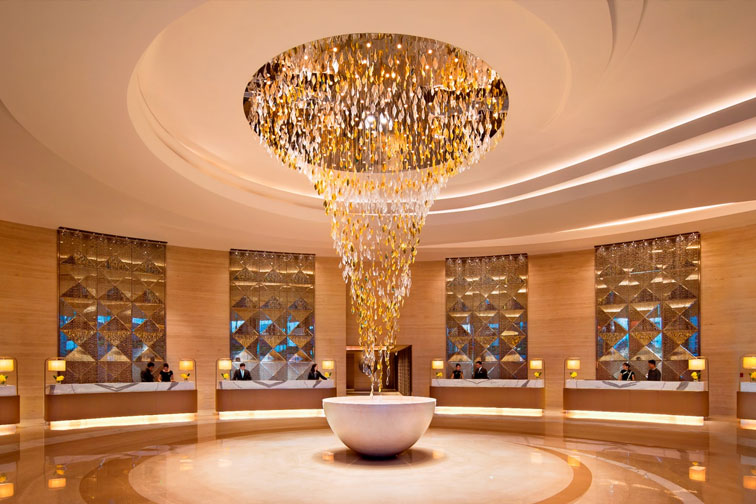
E. Close-up Shot Case Study: The Delicate Details
In this case study, we shift our focus to the exquisite details that make a hotel experience truly special. Through close-up shots, we encounter the delicate craftsmanship of a hand-carved wooden headboard, the intricate patterns of a mosaic tile backsplash, or the luscious texture of a gourmet dessert.
The close-up shots draw our attention to these finer elements, allowing us to appreciate the thought and artistry that went into creating a memorable guest experience. They tell stories of passion and attention to detail, enticing us to explore the hotel’s unique offerings.
♦ With these case studies as our guide, we’ve witnessed the transformative power of angles in hotel photography. The right angle can transport us into the heart of a space, evoke emotions, and entice us to embark on our own hotel adventures. Example: JW Marriott Mumbai-Sahar
As we continue our journey, armed with newfound inspiration, let’s unravel the tips and tricks that will elevate our mastery of hotel photography angles.
5. Tips and Tricks for Mastering Hotel Photography Angles
Congratulations, fellow explorer! You’ve navigated through the realms of angles, witnessed their enchanting influence, and experienced the magic they bring to hotel photography. But as with any craft, mastery requires finesse.
So, let’s equip ourselves with some valuable tips and tricks to elevate our skills and create captivating images that leave a lasting impression.
A. Practice and Experimentation
As the adage goes, practice makes perfect. The more you immerse yourself in the world of hotel photography, the more you’ll sharpen your instincts and develop an intuitive understanding of angles.
Experiment with different compositions, angles, and lighting conditions. Embrace the joy of trial and error, and allow yourself to be pleasantly surprised by unexpected results. Through practice and experimentation, you’ll discover your own unique style and perspective.
B. Understanding the Hotel’s Brand and Aesthetics
Every hotel has its own unique brand and aesthetic identity. Take the time to understand the hotel’s personality, its target audience, and the story it wants to convey. Dive into its design elements, color palettes, and architectural features.
By aligning your photography with the hotel’s brand and aesthetics, you’ll create a cohesive visual narrative that resonates with potential guests. Remember, your images should be an extension of the hotel’s identity, enticing viewers to step into a world that speaks to them.
C. Working with Different Spaces and Layouts
Hotels are a tapestry of diverse spaces and layouts – from cozy bedrooms to sprawling lobbies, serene gardens to lavish dining areas. Embrace the challenge of capturing each space’s unique essence through creative angles.
Experiment with eye-level, high-angle, low-angle, wide-angle, and close-up shots to showcase the distinct character of each area. Adapt your approach to suit the space, highlighting its key features, and guiding viewers on a visual journey through the hotel’s captivating landscape.
D. Shooting at Different Times of the Day
Light, the lifeblood of photography, undergoes a captivating metamorphosis as the day unfolds. Embrace the changing moods of natural light by shooting at different times of the day. Capture the soft, golden hues of sunrise, the vibrant colors of midday, or the atmospheric warmth of sunset.
Each time of day brings a unique ambiance and can transform the same space into a new visual experience. Be patient and observe how light interacts with the hotel’s architecture, interior design, and surroundings. Embrace the nuances and harness the power of light to elevate your compositions.
♦ By incorporating these tips and tricks into your hotel photography repertoire, you’ll embark on a path of continual growth and refinement. Remember, angles are your storytellers, your visual maestros. Harness their power, infuse your unique perspective, and create imagery that delights, captivates, and transports viewers into the magical world of hotels.
As our odyssey nears its end, let’s gather our learnings, revel in our newfound mastery, and embark on our next adventure with cameras in hand. Until we meet again, may your hotel photography angles be your compass to extraordinary storytelling.
Conclusion
Bravo, dear adventurers! We’ve traversed the intricate world of hotel photography angles, unlocking the secrets they hold and discovering their immense power to captivate and enchant. Before we bid farewell, let’s take a moment to recap the significance of angles and reflect on our journey together.
Angles, like the brushstrokes of a master artist, shape our perception and evoke emotions. They are the visual storytellers that transport viewers into the heart of a hotel experience.
We’ve explored eye-level shots that invite guests to immerse themselves in a space, high-angle shots that unveil the grandeur of architecture, low-angle shots that create an air of majesty, wide-angle shots that capture the vastness of landscapes, and close-up shots that draw attention to delicate details. Each angle has its own unique magic, contributing to the symphony of visual storytelling.
As we conclude our odyssey, let us not forget that mastery is a lifelong pursuit. The art of hotel photography angles requires dedication, practice, and a spirit of continual learning. Take what you have discovered here and let it serve as a foundation for your creative exploration. Embrace the joy of experimentation, be bold in your compositions, and allow your passion to fuel your journey.
Remember, beyond the technicalities and equipment lies the heart of photography – the ability to capture moments, evoke emotions, and transport viewers into the realms you create. Seek inspiration from the world around you, immerse yourself in the hotel’s story, and let your unique perspective shine through.
What is your take on Hotel Photography Angles? Let us know in the comments.
Related Articles
Your thoughts and questions





